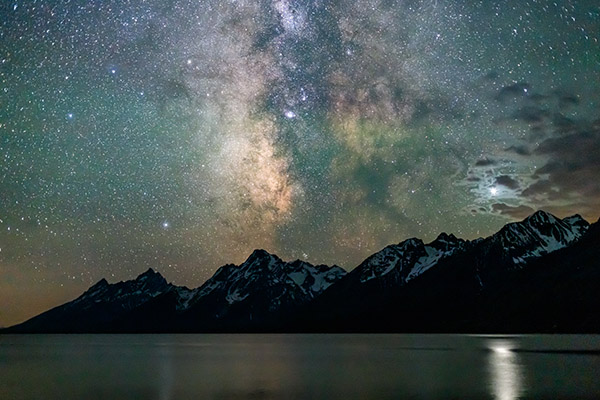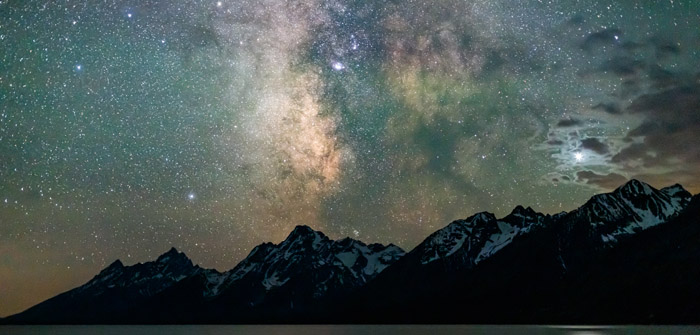 (Tetons at Night by John Mikkelson)
(Tetons at Night by John Mikkelson)
The High Desert boasts some of the darkest night skies in the continental United States. But with the region’s population growth, dark skies are a natural resource being lost. Increasing light pollution emanating from developed areas threatens the health and populations of species that depend on the dark including insects, migrating birds and even humans.
A new, original exhibit examines this issue. Vanishing Night: Conserving Dark Skies in the High Desert opens at the High Desert Museum on Saturday, April 16. The exhibit features breathtaking large-scale imagery of the changing High Desert skies and information about the harm light pollution causes to wildlife. It also offers simple solutions for all residents to cut back their use of artificial light.
“People might not think of dark night skies as a type of natural resource,” says Hayley Brazier, Donald M. Kerr curator of natural history and curator of Vanishing Night. “We’re excited to inspire visitors to make small changes that can help local ecosystems.”
The exhibit examines the ways that light pollution negatively affects wildlife. Given the fact that 60 percent of invertebrates and 30 percent of vertebrates are nocturnal, sky glow can have an overwhelming impact on an ecosystem. For example, moths are critical nighttime pollinators and are also drawn to artificial light. Their populations can be decimated when they exhaust themselves from frantic movement around artificial light. Predators can also easily find them en masse at those sites.
Also, humans depend on circadian rhythms like other animals. Light pollution is associated with hormonal imbalances and higher cancer rates. Artificial light suppresses melatonin, the hormone that fights cancer cells.
For simple solutions that everyone, homeowners and renters alike, can do, a variety of down-facing outdoor lights will be on display and other tips will be shared including putting lights on timers, motion sensors and more.
“Living in an urban area, it’s difficult to notice the slowly brightening night sky,” says Museum Executive Director Dana Whitelaw, Ph.D. “Vanishing Night helps us build appreciation for both the beauty and importance of keeping night skies dark.”
The Museum’s popular Natural History Pub lecture series at McMenamins Old St. Francis School in April focuses on light pollution. “For the Love of Dark Skies: Good for People, Ecosystems and the Economy” takes place on Monday, April 4 from 7:00 pm – 8:00 pm and features Mary Coolidge of Portland Audubon and a board member of the International Dark-Sky Association (IDA) Oregon Chapter and Dr. Bill Kowalik, board chair of the IDA Oregon Chapter. Natural History Pub is free, and registration is required at highdesertmuseum.org/natural-history-pub-april. Participants ages 12 and older will be required to show a COVID-19 vaccination card or a negative COVID-19 test taken within 72 hours of the event and a photo ID.
Vanishing Night: Conserving Dark Skies in the High Desert (highdesertmuseum.org/vanishing-night) will be on display through July 10. The exhibit is possible with support from Central Oregon Radiology Associates and the James F. and Marion L. Miller Foundation.

